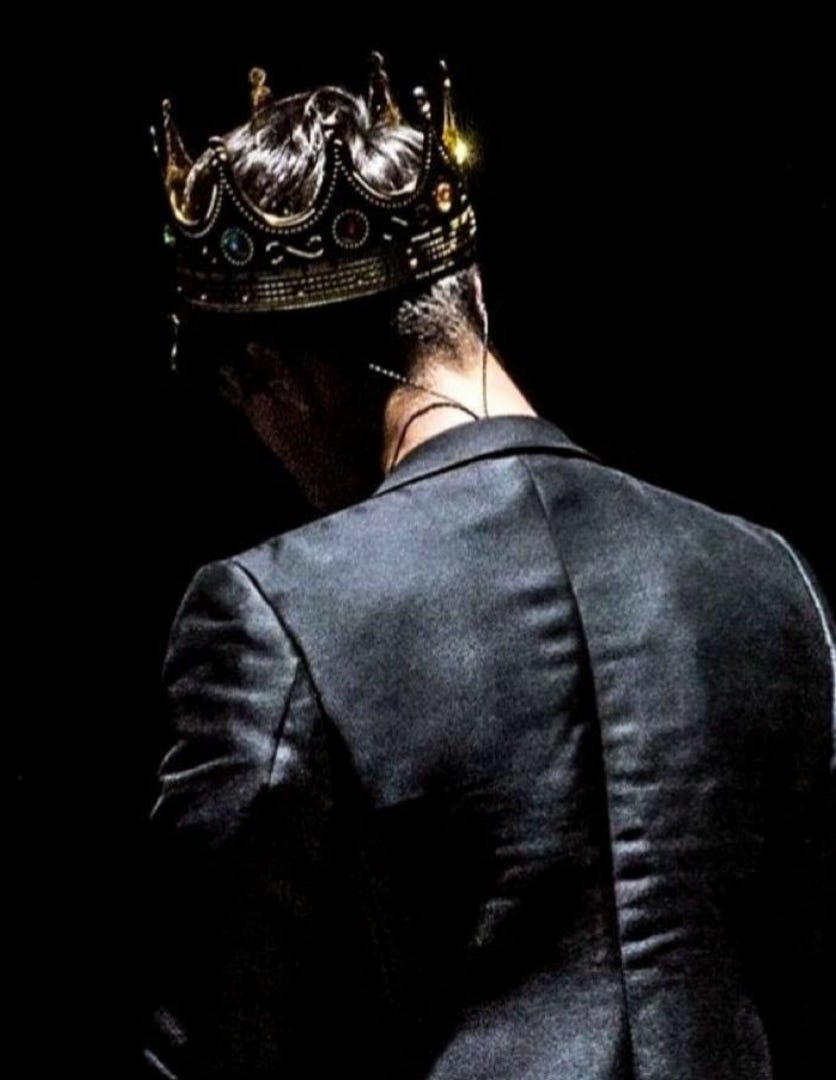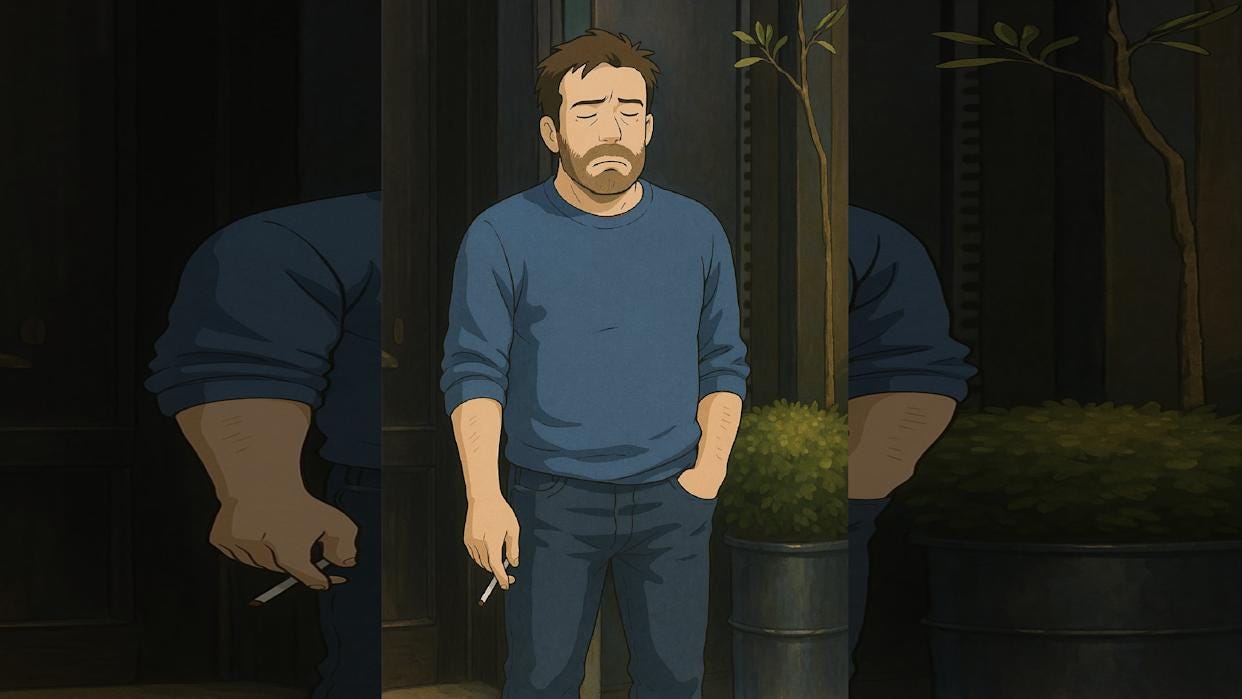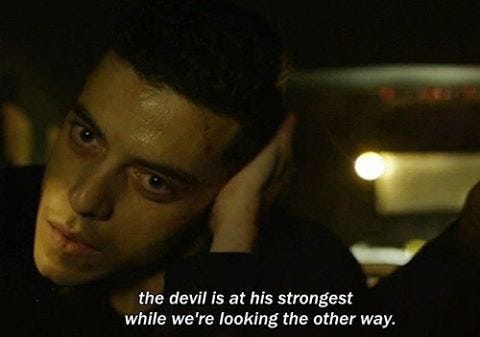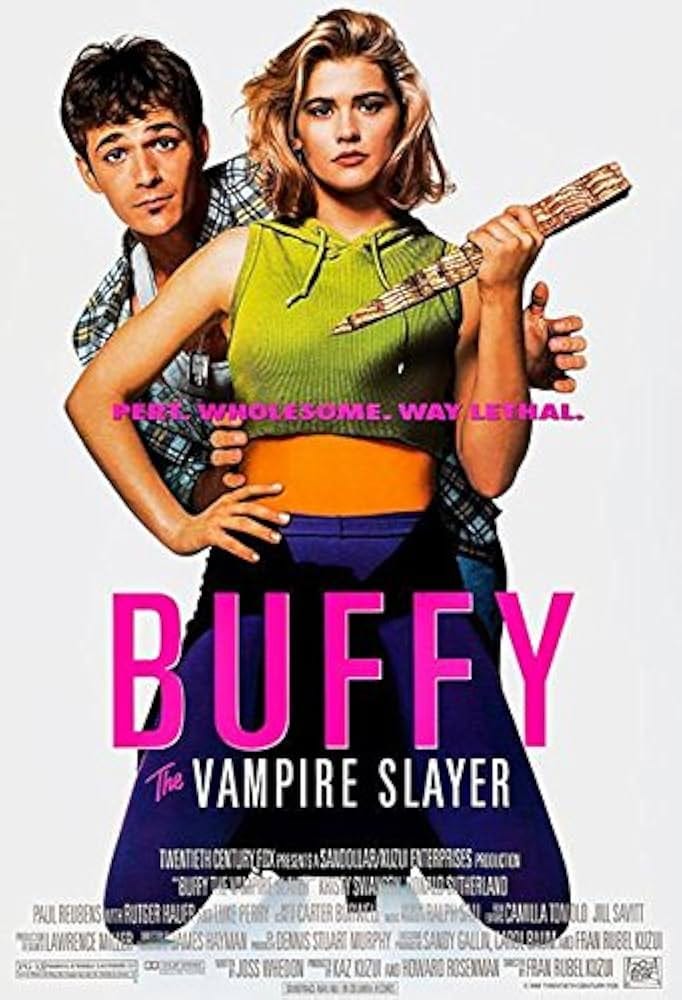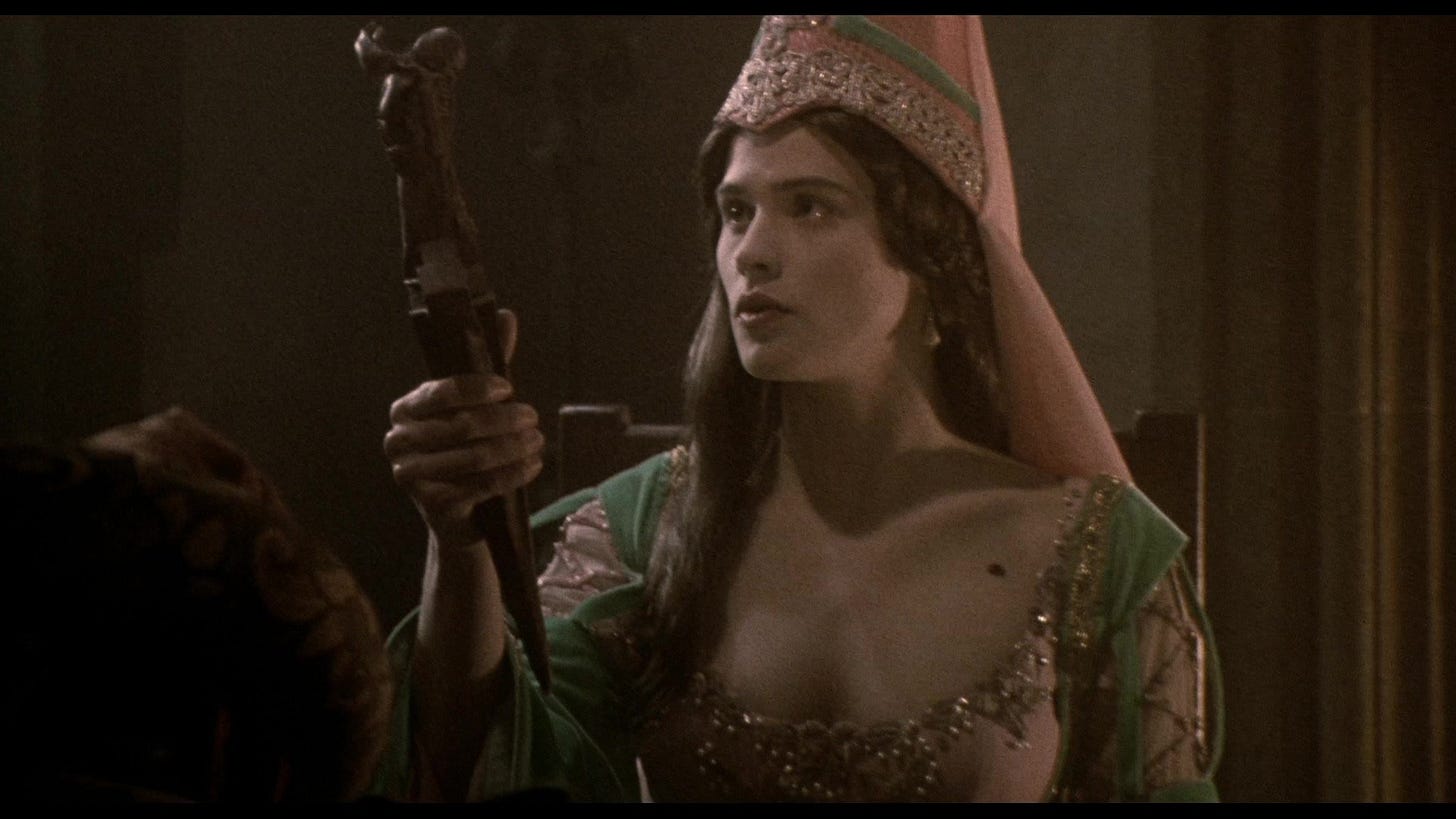Some recent testimonials from clients who’ve benefited from my transformation coaching. If you’re interested, contact me at zeitvillemedia@protonmail.com or go to Work With Me.
“Paul’s guidance has legitimately helped me make more money, align my business with my soul and really help accelerate my inner work. The amount of aha moments I still get every session is insane. Stop thinking and just start working with him.”
—Tiger Joseph, founder & filmmaker, @tigerjvideo
“I am very big on solving the right problem and understanding a situation from first principles. Paul helps me do that with my personality. Working with Paul has helped me hone my intuition and, to be frank, make fewer dumb decisions based on knee-jerk emotional responses. He will tell you things about yourself that typically take years of therapy to uncover. It's not about "predicting the future", it's about avoiding patterns of self-sabotage and learning to do a better job of sorting out the signal from the noise.” —Alex P., founder & marketer, @heyitsalexp
“The 2020s have been a painful puzzle so far, our institutions collapsed very suddenly with a direct influence in my life. Paul helped me navigate the crumbling civilizational infrastructure and put it into a much larger perspective allowing me to make it through and I've now set the base line for thriving in the latter 2020s.”
—Stewart Alsop, host of Crazy Wisdom Podcast, @stewartalsopIII
This week we witnessed a quirky little trend spread across X (formerly known as Twitter): people frantically fed ideas into an AI generator that would spit out images resembling a film by Studio Ghibli, known for its wholesome, cozy anime style. No stone was left unturned. Everything from vintage internet memes to historic events appeared in cartoon form.
But what was really happening here? Just another passing diversion to get us through the week?
Over here at The Zeitville Chronicle, we examine how our sense of self is influenced by trends and chaotic cultural cycles. “Zeitville” is much like the word “zeitgeist”—it translates literally to “Time City.” We all inhabit time, and the stories we tell ourselves are based on how we understand the past, present and future.
Memes, the currency of the modern era, are like windows into a particular moment of time.
Memes first took off because they referenced a collective conversation faster than an entire sitcom or movie. Instead of standing around the watercooler discussing the latest episode of “Friends,” our real-life friends were spinning off info-bites that would eventually get shared by other friend groups.
And so the term “viral” was born. We entered Web 2.0 with social media and smartphones in hand, creating the meme coliseum. It was a new spectacle but a welcoming medium that felt familiar, like public television—a large cultural conversation that anyone could tune into!
But something changed. The landscape started to fragment. Society became divisive, angry, confused. Memes made us feel like we shared LESS in common.
That created a spiritual void. Some people felt nostalgic. “Wasn’t it nicer when we all shopped at the same stores, had fewer choices, believed in institutions…”
The ache for belonging isn’t gone.
People want shared moments to matter more than ever, like a spiritual Super Bowl that says "society is still here."
I've spoken about the features of pre-fragmented society for years now and even coined a term for it: The Big Tent.
Many long-time followers know of course that The Big Tent is gone, dead, tattered, done and dusted. That's what 2020 was all about. The end of institutions. The dissolution of shared trust and rationality. Days bled into days. We lost our collective sense of time.
As with most things in history, it's not an overnight process. It's taken almost half a decade for many people to understand that the 2020s = fragmentation, destabilizing change, the end of centralization and the beginning of multi-polar power structures.
In fact, overnight history is one of our most precious myths. We love to pinpoint a moment and say “that’s when it all started.” People rush to create Ghibli art of global news events in much the same way that grade school students are taught that Franz Ferdinand started World War I.
"Do you remember where you were when Trump and Vance sat down with Zelensky? Let’s make AI art of that.”
AI art turns our present struggles into nostalgic, mythological moments of the past. So what future are we marching towards? What myths do we have that inspire us and keep our eyes on the horizon rather than the rearview mirror?
The rabbit hole goes even deeper, because these Ghibli moments began to reference other memes—not even real events that have happened. A copy of a copy.
“Do you remember where you were when you first saw the Ben Affleck smoking meme? Let AI enshrine this meme for you, giving it the aura of history.”
As if your first experience of a popular meme could be etched in your brain with historic importance, like 9/11 or the Battle of Normandy. In fact, the Twin Towers on 9/11 were turned into a cartoon this week.
It’s becoming obvious that the second half of the 2020s will give rise to new types of historical revisionism, and that will stoke all manner of ideological conflicts. It may not be an academic effort based on facts—but it’ll certainly be based on VIBE.
We are so hungry for new images. Anything that tells us "you are here, right now, along with others...the whole wide world."
But our sense of time is fundamentally changing, because as individuals we are diving deeper into niche corners and reality tunnels.
We don't share moments with The World (capital W) anymore. We share them in little worlds (lowercase) that we roam across every day.
Like saints in the desert, we are overwhelmed by delirious visions. But then the present moment settles down again. Our tribe travels on. The conversation shifts.
It used to be that you would overhear a conversation and know the movie or show that people were talking about. That’s how The Big Tent held together. Everybody sitting under the shade of the latest summer blockbuster film.
Now you’re more likely to not catch the reference. That bothers people, even though we like retreating to our little echo chambers. Something in the human heart prefers it when we can rally behind a hero together. That’s the power of myth.
Today I want to talk about the resurgence of heroism that we will be witnessing in collective images in 2025. But there will be many heroes…not just one Hero.
Let’s dive in and explore.
The Coming Anarchy
The unconscious is very sensitive territory. It's absorbing images all the time.
Now, many of you know that I catalog macro cycles here. They come in different flavors, affect different areas of life. For example, the cycle of beauty and illusion—we could call it a media cycle, generally—has a very strong effect on the unconscious, because it’s producing the imagery we swim in every day. Movies, social media, news and so on.
Soon as we go into April, we’ll be entering a massive new media cycle that does not resemble the type of entertainment and even the type of propaganda that we became familiar with in the 2010s.
This cycle of illusion and beauty (two sides of the same coin) roughly turns over at 15-year intervals.
That's enough time to develop a specific media zeitgeist before there's a changing of the guard. For example, the last cycle of illusion and beauty lasted from 1998 to 2011. It's pretty obvious to us now that a show from 2017 could not coexist with a show in the early 2000s landscape.
In much the same way, we will start to see spring 2025 as a time when creators develop images that don't fit in with the 2010s.
But…the images will build upon the 2010s. So we might more accurately say that this emergent cycle is partly renovating the 2010s and it's partly starting over fresh.
A finale and a first act all in one.
But what was the aesthetic of the 2010s?
First of all, we would probably say the growing omnipresence of social media and the anxiety that comes from surveillance. Netflix shows like "Mr. Robot" dramatized this. We also saw the normalization of political ideology being inserted into everyday conversation.
In general, we could say the preceding cycle was about claustrophobia and anxiety and feeling helpless in the face of overwhelming systems.
That opens the way for a new media cycle that will be extremely kinetic and aggressive and headstrong.
We will very likely begin to glamorize things like adventure and physical movement over constrained surveillance and propaganda. Fitness and extreme sports will re-enter conversations and narratives.
Furthermore, in opposition to the almost passive acceptance of totalizing systems like social media, where people would be locked in stalemates, we’ll likely see the growth of exiled or self-exiled communities. Rod Dreher published “The Benedict Option” in 2017, about the removal of Christian communities from secular society, and the zeitgeist wasn’t fully ready for that yet—but you can bet there will be a huge resurgence of this trend very soon.
New platforms will emerge and boycotting will increase. Freedom of speech and association will bend towards this tribal trend.
By extension, we will also see very heated campaigns against widespread insertion of ideological messages within everyday entertainment. It's not that people will hate propaganda, but they will want it more tailored to their own group, and they will be less tolerant of outgroup propaganda finding its way into the corners of their day-to-day lives.
Glamorization of war will increase. It’s likely that we’ll see sophisticated campaigns aiming to garner public support. Locally, there will be anarchic militias or religion-fueled skirmishes, much like we’ve seen in the UK lately.
Finally, we will definitely see narratives where characters fight back or simply take action in ways that disrupt the environment around them, rather than being swallowed whole by a Leviathan. This could easily prompt a resurgence of heroism in our culture, but again it will be strongly modified by what we have just come out of. It would be very easy for a beloved hero to come off as a charismatic cult leader who takes down a decaying giant.
In other words, the unconscious is about to get stirred up. Stillness is being replaced by action at all costs, for better or for worse.
Let’s keep going.
Stunt Double For Hire
So what might this new imagery look like? What kind of vapor from the 2010s will be trailing behind it?
Imagine this for a moment: a man leaping from a cliff, into the great unknown.
Now, that feels a little bit like our familiar 2010s theme—the big wide world about to swallow up our hero.
But instead of crumbling or spiraling into catatonic madness, the hero takes a leap of faith. The “muchness” of the world inspires him rather than crushes him.
This is the archetype of The Stunt Double and The Daredevil.
"I think I can, I think I can."
But why does this holy fool think he can take a risk? What’s changed?
Well, there’s belief. More specifically, self-belief.
If the previous media cycle was about the erosion of the individual—reducing him to component parts, tracked and surveilled—then this return of the hero requires an assertion of individual will.
The stunt double is focused. He’s not worried about missing the jump. He’s supported by a cosmic flow. Because he WANTS to do something, it is therefore ALREADY DONE.
Where there’s a will, there’s a way.
Of course, this can easily give rise to cult-of-self evangelism. “I am the chosen one!”
People might identify with a sense of righteousness that literally leads to modern crusade energy. It’s highly possible that these crusades will be about rectifying the past or correcting some grievance—like using war to justify historical revisionism.
Impulsive behavior, guided by a belief in being supernaturally appointed, could become the norm. That’s a terrifying prospect, certainly. I’ve always said the 2020s will be both beautiful and terrifying. But there are many good things that will come from this trend.
One of those good things will be an inner revolution that sparks creative risks—like an inner stunt double that gets awakened. Call it a heroic alter ego.
A stunt double is chosen to look like the lead actor from certain angles but he is the one who takes action.
While the new media cycle will influence some people to adopt cultlike behavior, others will soon discover that they have a fiery urge rising within them, ready to seize the day.
Stories will emerge in headlines and in fiction where someone snapped, but in a positive way. They just up and decide to become a doctor in some remote area, or leave everything to save the tigers in Nepal. The level of heroic sacrifice displayed will be deeply inspiring to other people.
It's a complicated renaissance that we're in, but it’s an awakening nonetheless.
Let’s wrap up with some final thoughts.
When Glory Becomes Just Another Story
The Clash have a song that goes: “Death or glory becomes just another story.” It’s about the changing of the guard, and the pressures to stay relevant.
The old rockstar can simply die and let some new flash in the pan take all the glory.
It feels like a relevant line, at a time when AI art has us turning history into collectible trinkets.
I always like to give you many examples of the ideas discussed here, and I think a 90s movie that I rewatched recently can give you a sense of the heroic imagery about to emerge.
The movie is 1992’s “Buffy the Vampire Slayer.” A campy choice on the surface, it would appear. But there’s more here.
The movie begins with a medieval prologue. We are told it’s “The Dark Ages.” A vampire slayer is chosen by her mentor to fight evil forces. But her mission isn’t completed, because vampires seize the castle and kill her.
Fast forward to “The Lite Ages” in Southern California. We see Buffy, a high school student, with her friends at the mall. She’s complaining about her history professor, saying she doesn't need to know about El Salvador’s history when clearly he has no sense of fashion history. “He wears a brown tie!” she exclaims.
We see the same vampires from The Dark Ages lurking around her town (I believe it’s supposed to be Pasadena, based on signage). History just keeps finding its way into the present. The vampire slayer is reborn—in the unlikely form of a cheerleader named Buffy—and the vampires are trying to stop her, so that they can dominate the world.
Merrick, her destined mentor, finds her and tells her what she needs to do. He refers to her as “the chosen one.” She has unfinished business from the past.
Meanwhile, we get plenty of peeks into the Big Tent culture of yesteryear. People wear bright clothing, are generally sociable while out and about, going to movies and eating Twizzlers at the mall. Society runs like a well-oiled machine, without much of the divisiveness that we’ve come to expect these days.
In fact, the real divide is between the living and the dead—the vampires and the citizens of this town.
Standing between the two is hero Buffy, trying to muster a sense of self-belief. “Don't you get it? I don't wanna be the chosen one!” she tells Merrick.
But she finds that stunt double within herself, leading to a period of action.
Her transformation is quick. One day she’s a cheerleader, the next she’s throwing stakes into the hearts of vampires.
Likewise, you’ll notice a quickness to the narratives ahead. New lifestyles will be adopted in rapid fashion, in contrast to trends from the 2010s, where slowness was considered to be the stamp of value (I once went to a “Slow Food” dinner where courses were dragged out so that you would talk with your neighbor more).
Paramedics, lifeguards, police officers and military personnel will be in news headlines more—anybody who serves to rescue people in high adrenaline situations.
In one scene, we see Buffy rescuing Luke Perry’s character by taking a shard of his acoustic guitar and driving it through a vampire. “Interesting choice,” says Merrick. “Last minute decision,” Buffy replies.
There’s going to be this reawakening of raw instinct that fascinates us in news headlines and entertainment. Buffy’s narrative arc is quite similar. She begins to pursue actions and physical movements that were previously untapped, like learning how to ride a motorcycle immediately because the situation calls for it.
Where do you feel a reawakening of instinct?
There’s a new type of hero within you trying to emerge. You can create it, right now. Watch how the outer world is changing, ready to accept new forms of action from you. No AI required. It’s up to us to create new mythologies.
Some recent testimonials from clients who’ve benefited from my transformation coaching. If you’re interested, contact me at zeitvillemedia@protonmail.com or go to Work With Me.
“Paul’s guidance has legitimately helped me make more money, align my business with my soul and really help accelerate my inner work. The amount of aha moments I still get every session is insane. Stop thinking and just start working with him.”
—Tiger Joseph, founder & filmmaker, @tigerjvideo
“I am very big on solving the right problem and understanding a situation from first principles. Paul helps me do that with my personality. Working with Paul has helped me hone my intuition and, to be frank, make fewer dumb decisions based on knee-jerk emotional responses. He will tell you things about yourself that typically take years of therapy to uncover. It's not about "predicting the future", it's about avoiding patterns of self-sabotage and learning to do a better job of sorting out the signal from the noise.” —Alex P., founder & marketer, @heyitsalexp
“The 2020s have been a painful puzzle so far, our institutions collapsed very suddenly with a direct influence in my life. Paul helped me navigate the crumbling civilizational infrastructure and put it into a much larger perspective allowing me to make it through and I've now set the base line for thriving in the latter 2020s.”
—Stewart Alsop, host of Crazy Wisdom Radio Show, @stewartalsopIII




